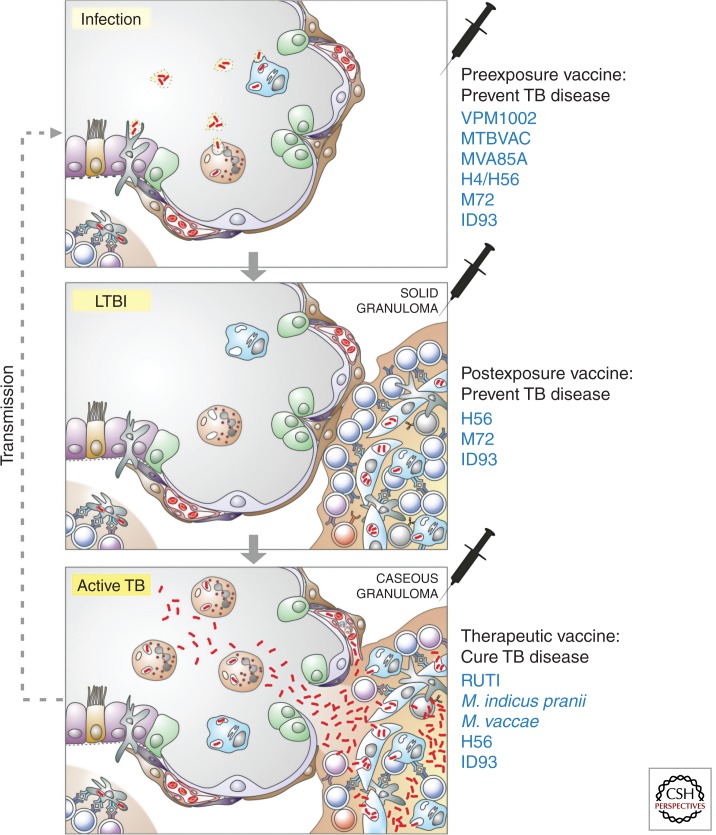Figure 1.
Novel vaccination strategies in the context of tuberculosis (TB) immunology and pathology. The three stages of TB are shown: infection, latent TB infection (LTBI), and active TB. Soon after Mycobacterium tuberculosis (Mtb) has entered a lung alveolus, it will be taken up by alveolar macrophages (blue) and neutrophils (orange) in the alveolar space and dendritic cells interspersed in the epithelial layer. These dendritic cells transport Mtb into draining lymph nodes where acquired immunity is stimulated. During LTBI solid granulomas contain Mtb inside mononuclear phagocytes. These solid granulomas are highly structured under the orchestration of T lymphocytes. During active TB, granulomas deteriorate and become caseous. As a consequence, Mtb multiplies in an unrestricted way and is spread through capillaries to other organs and through ruptures into the alveolar space, to the environment. Preexposure vaccines (top) to prevent TB disease are given before infection. VPM1002 and MTBVAC are live replacement vaccines given for prime instead of BCG and MVA85A; H4/H56, ID93, and M72 are booster vaccines on top of BCG. MVA85A is viral-vectored, whereas H4/H56, ID93 and M72 are protein adjuvant formulations; the target population is infants. Postexposure vaccines (middle) to prevent TB disease are given during LTBI as booster of a BCG prime. H56, M72, and ID93 are protein adjuvant formulations; the target population is adolescents and adults. Therapeutic vaccines (bottom) are given to patients with active TB in adjunct to or following chemotherapy, to cure TB or to prevent recurrence. RUTI is a semipurified preparation of Mtb, and Mycobacterium indicus pranii and Mycobacterium vaccae are killed preparations of atypical mycobacteria; the target population is TB patients, notably coinfected with HIV and/or suffering from multidrug or extensively drug-resistant TB.

